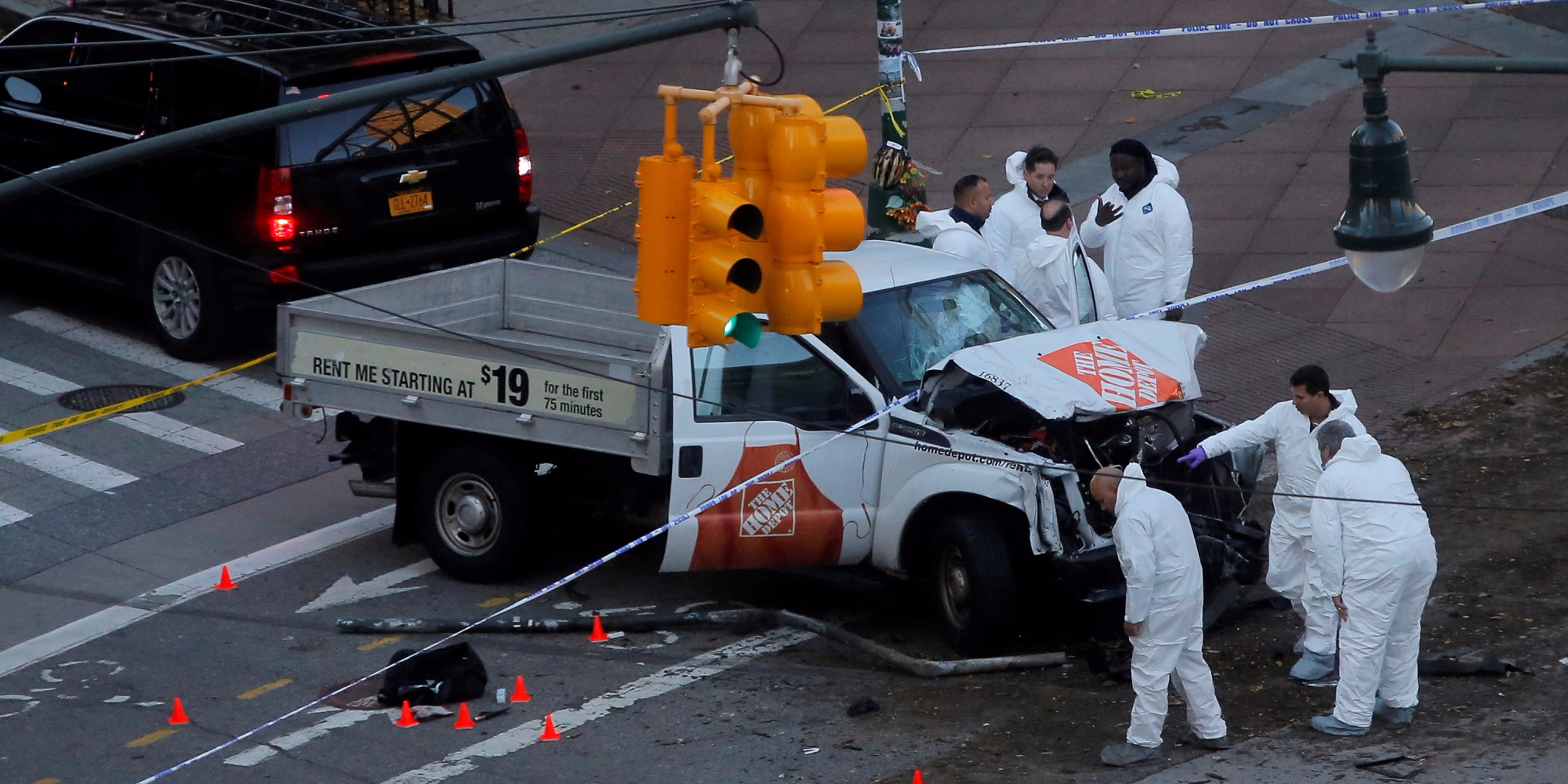- The deadly attack in New York on Tuesday was the first major US vehicle ramming. In the past year, Berlin, Nice, Stockholm, Barcelona, and London were hit by similar atrocities. ISIS specifically encourages jihadists to use vehicle attacks. There is relatively little that police forces can do to prevent such attacks.
Terror revisited New York on Tuesday afternoon in dramatic fashion, leading to eight deaths by the Hudson River in Lower Manhattan.
The killings which loom large in recent US history – Las Vegas, Orlando, San Bernardino – were mass shootings, a phenomenon more or less unique to the United States among developed Western nations.
But this week, it was a rented pick-up truck which became the instrument of terror, a modus operandi painfully familiar to the great cities of Europe, which is only just beginning to take hold in the United States.
Barcelona was the most recent city to suffer large-scale slaughter from a rented van.
There was a similar pattern for the London Bridge and Westminster attacks earlier this year, while in Berlin, Nice and Stockholm, the attacker went further and used a full-size truck to cause even more damage.
To an extent, this is born of practicality. Although other attacks like the Paris Bataclan massacre shows that it clearly is possible to come by large quantities of guns in Europe, it is obviously easier to get hold of a large vehicle.

Given that New York City has some of the tightest gun controls in the United States, and an outright ban for anybody who isn't a US citizen, the same logic applies.
But the practical argument is also backed up by specific instructions from ISIS, who advise would-be terrorists to wage attacks in exactly this way.
A proclamation in 2014 by ISIS's chief spokesman, Abu Mohammad al-Adnani, told jihadists planning domestic attacks how to look beyond guns and improvised explosives. It said:
"If you are not able to find an IED or a bullet, then single out the disbelieving American, Frenchman, or any of their allies. Smash his head with a rock, or slaughter him with a knife, or run him over with your car, or throw him down from a high place, or choke him, or poison him."

These messages are taken seriously. Ahmad Khan Rahimi, who planted a bomb in Manhattan in 2016 and injured 31 people, mentioned al-Adnani by name in a notebook he was carrying with him after the attack.
And, as observed by New York Times writer Rukmini Callimachi, an expert on ISIS, a terror magazine distributed online goes into some detail about the precise type of vehicle best used in an attack:
21. My colleagues at @NBC are reporting a note was found in truck mentioning ISIS. Waiting for further details but this is in line w/Rumiyah pic.twitter.com/VJ3wUWRDz7
— Rukmini Callimachi (@rcallimachi) November 1, 2017
As police in Europe have discovered, and those in New York inevitable already knew, attacks like this are extraordinarily hard to prevent.
In London, Nice, and other stricken cities authorities have built barriers around areas they think are especially at risk. Tighter controls on vehicle hire have also been suggested, as many of the vans and trucks were rented.
London's Metropolitan Police recently unveiled a new spiked mat device - the Talon - which is specifically designed to prevent attacks by anything up to a small truck.

But it can only really guard pre-planned events where police are already active, while the sheer scale of activity required to protect even a tiny proportion of roads from random vehicle attacks makes the prospect impossible.
The latest security challenge from terrorists is, it would appear, spreading event further afield. And we are no closer to an answer.

